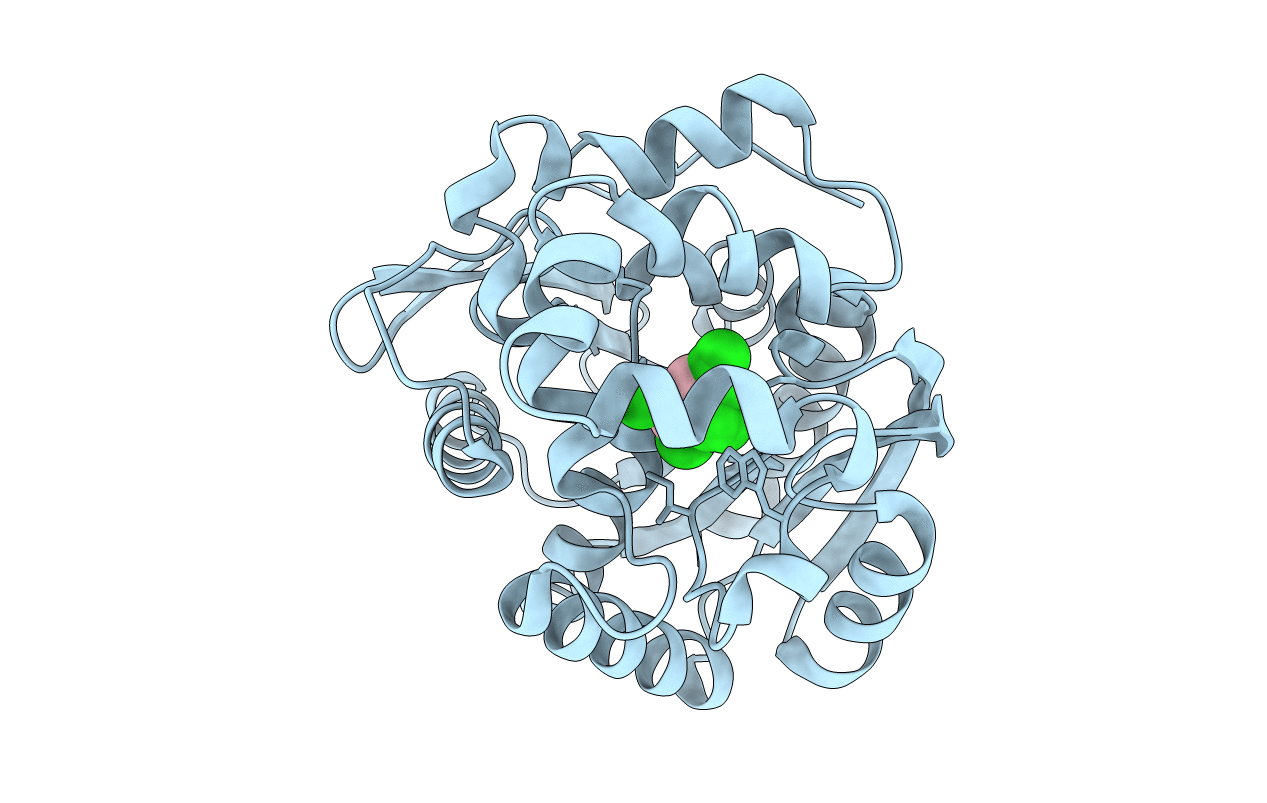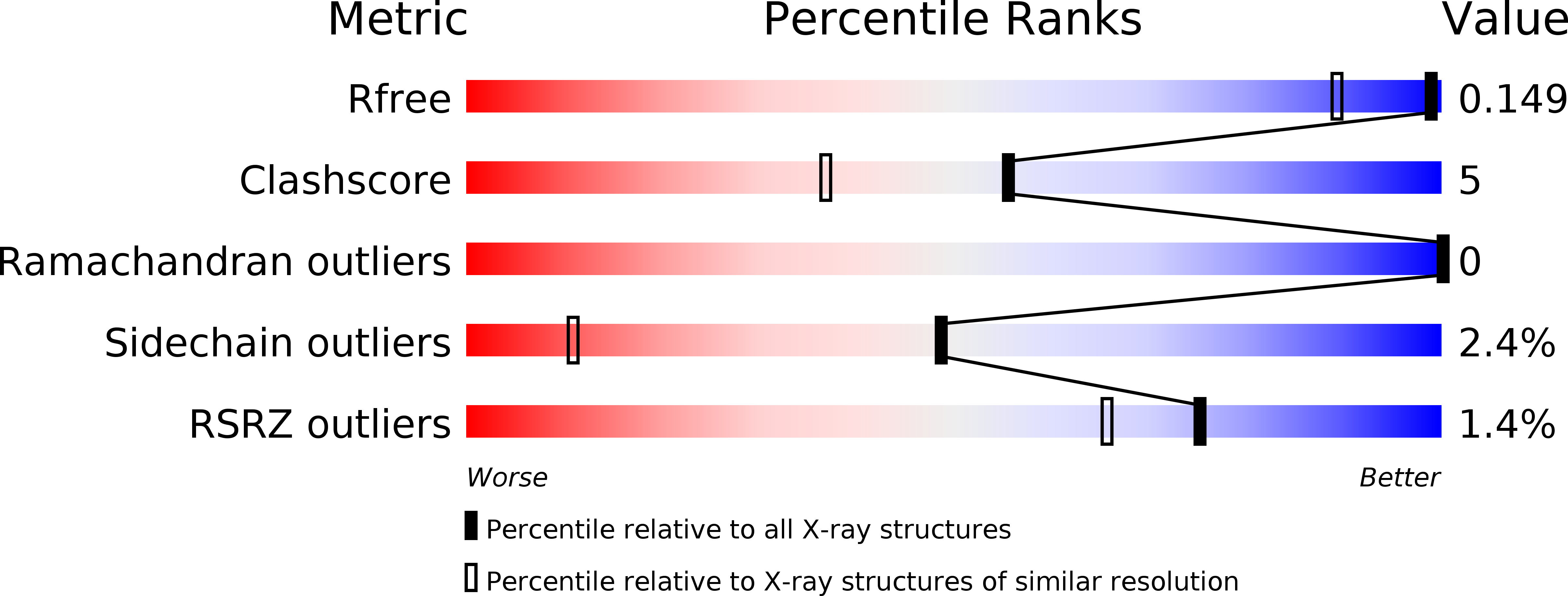
Deposition Date
2012-06-30
Release Date
2012-09-05
Last Version Date
2023-09-13
Entry Detail
PDB ID:
4FWB
Keywords:
Title:
Structure of Rhodococcus rhodochrous haloalkane dehalogenase mutant DhaA31 in complex with 1, 2, 3 - trichloropropane
Biological Source:
Source Organism:
Rhodococcus rhodochrous (Taxon ID: 1829)
Host Organism:
Method Details:
Experimental Method:
Resolution:
1.26 Å
R-Value Free:
0.16
R-Value Work:
0.13
R-Value Observed:
0.13
Space Group:
P 1


